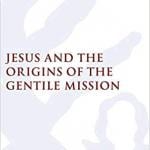JoAnna M. Hoyt
Amos, Jonah & Micah, Evangelical Exegetical Commentary
Bellingham, WA: Lexham, 2019.
Available at Logos and Amazon
Reviewed by Andrew Judd
Lexham Press’s new Evangelical Exegetical Commentary series is shaping up to be an attractive contribution to the marketplace. Like Goldilocks’ third bowl, for me they’re pitching it just right: evangelical, without being bloody-minded; scholarly, but not recondite; detailed enough, without losing the forest for the trees. So far we’ve seen eight of the planned OT volumes emerge: Exodus, Samuel, Ezra-Nehemiah, Esther, Song of Songs, Lamentations, Daniel … and now JoAnna M. Hoyt’s superb commentary on three of the minor prophets.
It is probably inevitable that the minor prophets end up bundled together — people just aren’t going to buy enough single volumes on Amos to make publishing sense. Amos, Jonah and Micah are bound together presumably because they are all eighth century prophets, but really each commentary stands just fine on its own. (The marketing department has done a noble job in the blurb connecting the books with ‘the theological themes of divine justice, mercy, judgment, and repentance’… which is like grouping Sunday, Monday and Tuesday because they end in ‘-ay’.) That said, what Lexham have done with this bundle is quite generous: essentially you are getting three substantial standalone commentaries of 200–300 pages in one volume for the quite reasonable price of USD 37.99 (Logos) / 54.99 (hardcover).
The commentaries each begin with a helpful introduction covering the historical and literary context and the major theological themes. The historical context relevant to exegesis of each book is well explained and some useful footnotes give plenty of leads for chasing down if more detail is required.
These introductions devote a very, very pleasing amount of real estate to questions of genre — does Amos borrow hymns? is Jonah satirical? Hoyt’s approach is informed by Discourse Analysis, which reflects her Hebrew linguistics expertise. Now, I find this kind of linguistic approach to genres (all this talk of weqatals and fronted pronouns) a little too granular, preferring to look a little more at themes (which she worries ‘can be subjective’). But questions of taste aside, it is a superbly executed and wonderfully useful way in to engaging with the diversity of prophetic discourse.
On thorny issues Hoyt advocates a thoughtful evangelical orthodoxy. Take the historicity of Jonah as an example. Hoyt considers the issues surrounding the apparently inaccurate descriptions of Nineveh and its customs, giving charitable explanations in light of the narrator’s purpose and genre (p363). She acknowledges the stylised telling of the story, while insisting that there is no reason to doubt that Yahweh could have sent a big fish to swallow Jonah for three days (p364). In other words: it all depends on your presuppositions. The tone is neither defensive nor anxious, which is what we want evangelical perspectives on critical issues to be.
The textual commentary itself is broken up into sensibly chosen major sections of around one chapter of biblical text. Each major section receives a short introduction giving an overview of that part’s contribution to the message of the whole, and an outline of the structure. At the end of each section there is a paragraph or so of Biblical Theological comments followed by some short application or devotional reflections. These short but suggestive reflections demonstrate Hoyt’s pastoral experience and deep insight into Old Testament theology. The Old Testament theological approach certainly avoids flattening each text into the same tired devotional frames, though at the same time my preference would have been for a slightly more Christological flavour to some of the applications.
But the featured attraction of this show really is the exegetical work. Each sub-section within that unit gets its own introduction, and then the most granular exegetical detail is given in units of 1–2 verses. These verses are summarised, translated, textual issues noted, commentary given on each verse, and any special issues noted. Recent Journal articles relevant to the exegetical issues in these verses are often helpfully provided in a mini-bibliography. The analysis is top notch — with great decisions about what to include and what to leave out. (Deciding what not to comment on is, after all, what we pay commentary writers for!) The commentary includes un-transliterated Hebrew text and references to pertinent linguistic elements, which fits the target market of critical scholarship-curious evangelicals with at least a little Hebrew.
Hoyt provides an excellent guide to these three minor prophets, which succeeds in its goal of keeping one thoughtful eye on recent critical scholarship, and another pastoral eye on the pews. I would highly recommend this book — especially for graduate level seminarians, and for preachers who want to keep up their Hebrew exegesis skills without getting lost in a pile of technical commentaries.
Andrew Judd is associate lecturer in Old Testament at Ridley College.











